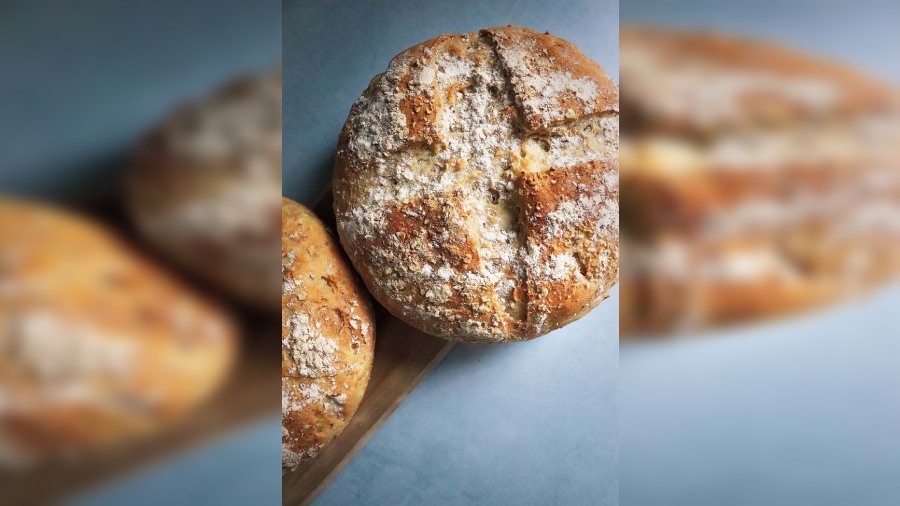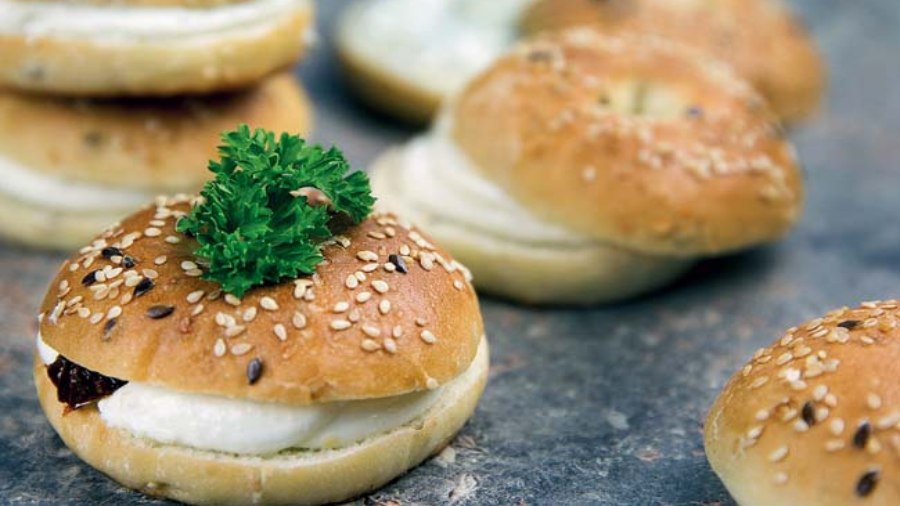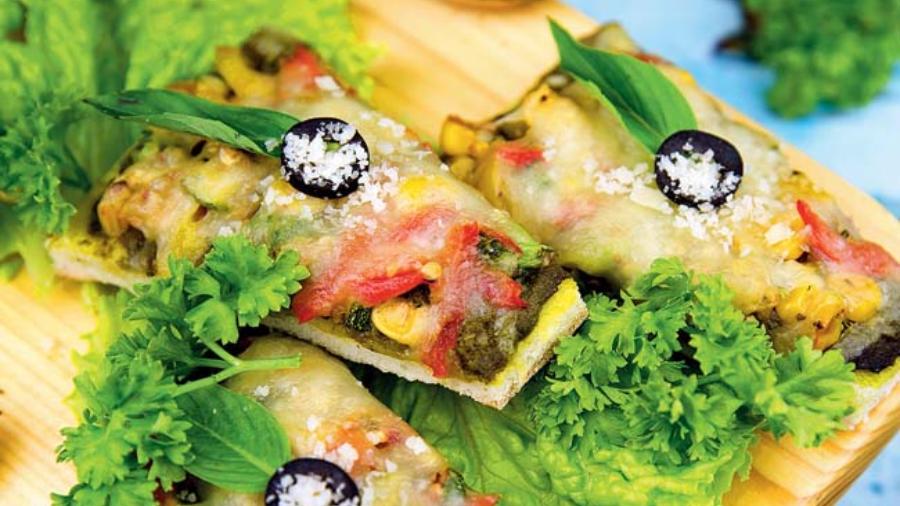Many moons ago, my English teacher used the term “breadwinner”. What’s more, she asked me the meaning of it. Honest to God, I didn’t know what it meant back then, but it did make me wonder how important bread is in the whole scheme of things.
Literally a synonym for sustenance, the history of bread dates back 30,000 years, when humans had still not become agricultural. The source of nutrition for many a civilisation, bread, in all its forms, is integral to humankind.
Fast forward to today, I live for my artisanal sourdough boules, baguettes and pillowy focaccias, and thank heavens and the pandemic, my options for them have skyrocketed! Since the year 2020, many bread lovers have become enthusiastic home bakers, and the enticing smell of freshly baked loaves wafts through kitchens across the globe.
I loaf you, bread!
Bread-making has been a way of life for ages, and never has it been as recipe-driven as today.
The ancient Egyptians were the first people to make leavened bread — a batch of dough was perhaps left to stand before being baked, leading to a softer, more palatable bread. It is the first time in history that people discovered that leaving dough to stand caused wild yeast cells to settle in and produce carbon dioxide, which creates air bubbles in the dough. Many centuries later, a baker realised that old dough from one leavened batch could be used as a starter for the next batch of the bread, resulting in slightly more consistently raised loaves.
Artisanal Bread?
Now you may wonder, is my regular bread not artisanal? Well, here are a few things that may help you distinguish between what’s plebeian and what’s artisanal.
Artisanal bread only uses four ingredients — flour, water, salt and a starter. Period. None of the chemistry lab-sounding products like calcium propionate and sodium stearoyl-2-lactylate are used to increase shelf life, or enhance the flavour of the loaf. Some even go as far as to say that artisanal breads shouldn’t use commercial yeast! That is something I will elaborate on in a bit.
They use traditional methods — this point can be up for argument. What defines traditional? Is a 50-year-old white bread recipe used in the bread factory not traditional? It’s actually not all too clear, but the general understanding is that anything that steers clear of heavy equipment and beckons to days before electricity, is traditional enough. However, as we all can honour, using the hearth is not an option for most today, so we straddle this fine line of going back to an older time for the proofing process, while engaging in modern equipment for much of everything else. There is no cookie-cutter method for artisanal bread, it is a process of love.
Artisanal loaves are differentiated from regular bread by the time they take to create and their rustic look. No two loaves look alike — the individuality of each boule, bloomer, baton or baguette is what makes them one of a kind.

To Yeast or not to Yeast
Most commercial kitchens rely on yeast as the leavening agent — and quite honestly, it is a lifesaver when you’re rushed for time. The consistency in terms of results and flavour has made yeast a kitchen staple. But, it wasn’t until much recently that yeast became as easily available.
The word “sourdough” was added to the English language in 1897! A sourdough starter is a living community of lactic acid bacteria and wild yeast. Both feed on carbohydrates and ferment to release carbon dioxide gas, which is the basis for the airiness of any bread.
It would not be amiss to call commercial yeast tame, since it produces consistent results with great alacrity. Sourdough starters containing wild yeast, on the other hand, takes longer to work and carries a lot of diversity of microorganisms, including lactic acid bacteria.
Since the process of fermentation with wild yeast starter is slower, it gets a chance to break down hard-to-digest gluten, free minerals and contribute B vitamins.
The lactic acid from the sourdough starter also adds a complex tang that act as a natural preservative. Numerous studies have shown that wild yeast can lower blood sugar levels and even reduce symptoms of irritable bowel syndrome.
The digestibility, nutrition and complex flavour profile definitely put wild yeast breads above their commercial counterparts.
Putting the art in artisanal
The world of baking has undergone a global explosion and there is a heavy demand for handmade artisanal products. The look and flavour of rustic-looking loaves drives the consumer to make purchases that they may have earlier found unfeasible.
At Paprika, we pride ourselves in baking some of the freshest loaves with love. From French baguettes to stuffed focaccias, bagels, pitas and even charcoal sourdough, we make it all.
We constantly experiment with newer recipes and keep improving our products since baking is very heavily dependent on the temperature and humidity of any location. Flours that comprise ancient grains, gluten-free options and healthier varieties regularly make their way into our loaves. Tsampa, oats, quinoa and even freekeh flours are lovingly created into breads by our experienced bakers.
The distinctive crumb of artisanal loaves is a big draw. The freshness and crispness of a batch of bagels or the tender softness of an out-of-the-oven focaccia are attractive to the new-age consumer. Cookie-cutter is out, authenticity and transparency is appreciated more than ever today.
Getting Real
The demand for “real” bread is growing every day as consumers look for recipes that are low on ingredients and high on flavour and texture. A lot of us are now baking our daily bread and truth be had, it is a liberating and empowering process. Be it a chewy baguette or a melt-in-your-mouth focaccia, baking imparts a sense of calm that is therapeutic. The heavenly smell is an added bonus.
Honest baking is what makes any bread artisanal. And honesty is something I truly stand by.
RECIPES

Smashed garlic, cream cheese bagel
Ingredients
•1 cup flavoured cream cheese
•1 clove garlic smashed
•2tbsp chives diced
•4pieces sesame bagel cut in half width-wise
•Bunch of dill
Method
• Mix cream cheese with garlic, add the diced chives.
• Spread generous amount of cream cheese mixture on the base of the bagel.
• Optional: can add sliced avocado, scrambled eggs.
• Place a sprig of dill and the lid of the bagel on the top.

Pesto vegetables focaccia
Ingredients
•2 medium zucchini, cut into 1/4-inch horizontal slices
•2 portabella mushroom caps, stemmed and cut in 1/2-inch strips
•1 medium red bell pepper, cut into 1-inch wide strips
•1/4 medium red onion, cut into 4 wedges
•4tsp olive oil
•1tbsp chopped fresh thyme leaves
•1/2tsp salt
•1 focaccia loaf (9-inch square), cut in half horizontally
•1/3cup mayonnaise
•1tbsp basil pesto
•1 cup baby arugula
•1/2 cup sundried tomatoes chopped
•4 slices mozzarella cheese
Method
• Heat a grill. In large bowl, mix zucchini, mushrooms, bell pepper, onion, oil, thyme and salt; toss to coat vegetables.
• Place on grill over medium-high heat. Cover and cook 8 to 12 minutes, until grill marks appear and vegetables are just crisp-tender. Set aside.
• Place focaccia halves on work surface, cut sides up. In small bowl, mix mayonnaise and pesto. Spread mayonnaise mixture on cut sides of bread. Layer zucchini, mushroom, bell pepper and onions on bottom half. Top with arugula, sundried tomatoes and cheese. Replace top half; press slightly. Cut into 8 pieces and serve.

Vidisha Bathwal is the founder of Paprika Gourmet, an exotic artisan catering service brand in Kolkata. She’s also a passionate foodie and a fitness enthusiast.
